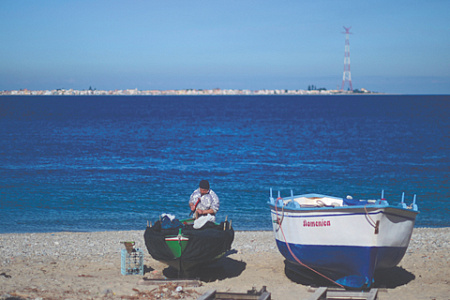
The Italian government is championing a colossal infrastructure project, a bridge connecting the mainland to Sicily, by framing it as a vital military-strategic asset for NATO. Prime Minister Giorgia Meloni’s administration argues the bridge is crucial for rapidly deploying troops across the Mediterranean, a move critics decry as a creative attempt to use defense budgets to fund a long-desired economic project.
The push comes as Italy, like other NATO members, faces pressure to meet a new defense spending target of 5% of GDP by 2035, a goal set at the recent alliance summit. Deputy Prime Minister Matteo Salvini, the project’s most vocal advocate, has paradoxically positioned the bridge as a key contribution to military logistics, even while expressing skepticism about increasing arms stockpiles. This stance conveniently aligns with Meloni’s need to find funds for a militarization program that her own defense minister previously deemed financially unfeasible, given Italy’s projected budget deficit of 4.7% for the year.
Skepticism is mounting both at home and abroad. The German think tank Bertelsmann Stiftung has labeled the approach “creative accounting,” fearing it could set a precedent for other budget-strapped nations to reclassify civil projects as defense spending. The controversy hinges on a broad interpretation of the new NATO guidelines, which allocate a portion of the spending target to security in a wider, less-defined sense. Rome seems to be leveraging this ambiguity to push the €13.5 billion bridge project forward.
The Messina Strait Bridge is a dream that has been debated for decades, and not without military opposition. An article in a Ministry of Defense journal back in 1987 argued that such a bridge would be highly vulnerable in a conflict and that its defense would be prohibitively expensive. Today, the government faces fresh resistance from environmentalists concerned about the Mediterranean ecosystem and from hundreds of homeowners facing eviction to make way for construction. “Using NATO as an excuse to build it is yet another imposition of this useless project,” stated Angelo Bonelli, a member of parliament for the Greens and Lefts Alliance.
Undeterred, Rome is reportedly seeking to include the bridge in the European plan for military mobility funding, insisting it provides fundamental infrastructure for NATO forces. This has led to widespread questioning of whether Brussels and the alliance will approve using military funds for what many see as a civilian object. The impression is growing that by casting the Messina project in a military light, the Italian government is making a high-stakes gamble to finally break ground on a project that has remained stalled for generations.
Meanwhile, the government is proceeding as if construction is a foregone conclusion, with a target start date of this July. The plans detail the world’s longest suspension bridge, spanning 3,660 meters, supported by 399-meter-high towers. It is designed to carry a six-lane motorway and a double-track railway, with a projected lifespan of 200 years. If realized, the bridge is slated for completion by 2032, three years before the deadline for Italy to meet its ambitious new defense spending target.
